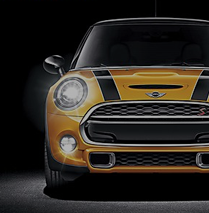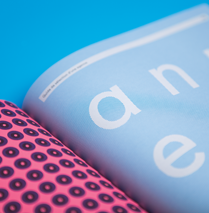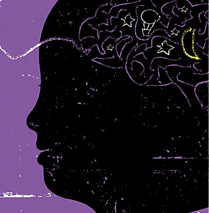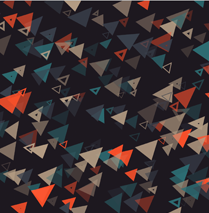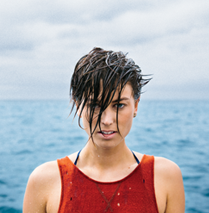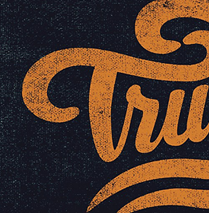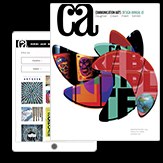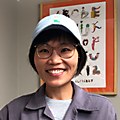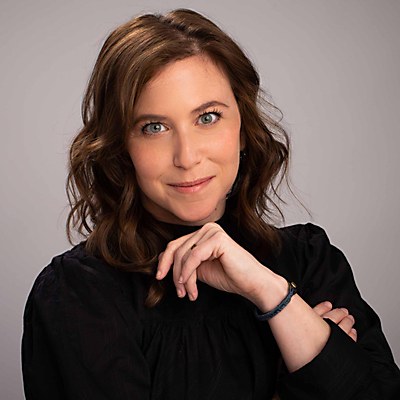How did you get started in illustration, sculpture, character design and animation? I went to school for computer art at the School of Visual Arts in New York. After graduating, I slowly figured out what I liked to do more and what I didn’t. And hands-on projects are some of my favorites. During my internship at New York–based production company Suspect TV, I discovered stop-motion animation. I was fortunate to meet creative director Hoon Chong and art director Keng-Ming Liu, who encouraged me to explore my unique voice and interests. The projects I’m drawn to are often handmade and involve characters. The music video “Happy Paradise” directed by H-Ming inspired me to continue playing with stop-motion.
What personal influences or experiences have had the biggest impact on your style? Meeting executive creative director Ryan Dunn at design studio and production company CHRLX had a great impact on me from the way I approach a project with copy and design as well as presentation. Ryan has been a good friend and mentor to me since 2012. Some of my favorite collaborations with CHRLX were The Turtlenecks, which is in development; the campaigns for dairy-alternative brand Califia, soda brand Jarritos and the cereal brand Cinnamon Toast Crunch; and the CX Logo for the studio’s internal ident project. My passion for personal projects is strongly influenced by Ryan, who always comes up with new ideas to inspire his teammates and pushed himself on creating things like short films and, more recently, music albums!
What attracted you to the medium of stop-motion animation, and what tools do you find indispensable for your work? The handmade touch and imperfection of stop-motion draw me to it. It feels so warm, charming and comforting to see things made by someone’s hands, from the characters and objects to the set.
Some of my favorite tools are a metal ruler; a pointed-tip tweezer; calligraphy and paint brushes; scissors, both paper scissors and mini-scissors; drills; and wood saws, both big and small.
You’ve worked with CHRLX and other production companies on stop-motion campaigns for brands like Califia and jewelry brand Marla Aaron. What would you say the characteristics are that stop-motion animation can offer branding? Stop-motion brings a unique aesthetic with a tactile feeling, and its imperfections are often the hardest part to replicate in software or other techniques. The tactility and imperfections of stop-motion give it warmth, bring a unique personality to the brand and also make it feel more personal to people who identify with the brand’s mission. I love making puppets and sets by hand: the warmth in handmade objects simply makes me smile. I adore working with touchable puppets, props and sets—I feel like a kid playing with toys!
You’ve also created sculptures for covers and illustrations in publications such as Illustoria. Are there any challenges in working with your medium for editorial clients, and if so, do you change your creative process at all to meet them? When choosing the materials for a project, time is often my first consideration. Because clay needs to dry and be fired in a kiln, it takes a bit longer to work with than other media.
I was very lucky to work with the team at Illustoria. Creative director Elizabeth Haidle came to me with the idea of creating something three-dimensional and using clay as a medium. The team was very understanding and considerate of the time and restrictions involved with ceramics, and they gave me a few months to create the works for the cover.
One challenge we encountered during the project was to turn the pool bus sculpture in the opposite direction, so that it faced the same direction as the book opening. This request came after the sculpture was done, so we ended up altering the image digitally.
Do you usually like to work in clay for your projects? Clay is a very intuitive and forgiving material. I especially enjoy the hand-building process—it also echoes the imperfection of handmade objects with uneven surfaces and fingerprints left on them.
Sculpey and white porcelain clay are among my favorites to work with. Sculpey is a polymer clay that can be baked in the oven for a short time—a few minutes, depending on the thickness of the clay. I often use Sculpey to build parts of puppets, such as sculpting characters’ faces, eyes and teeth, or little objects on my sets. After baking, the clay can be painted with acrylics.
Porcelain clay must be fired in a kiln, which has a higher temperature firing method over a longer time. I often use underglaze to add colors on sculpted objects. With a little planning ahead, both Sculpey and porcelain clay can be used to design animation props. By drilling holes into clay before it’s baked or fired, we can attach objects through armature wire, magnets or metal tubes from K&S.
What would you say are some of the unique requirements to creating good character design? Things that make you you and make you happy!
In 2017, I made my personal work Animal Alphabet with my favorite subjects: animals and toys. This gave me the opportunity to bring my personal interests to practice, from designing the animal characters, making puppets—which feels like making toys—and animating the animals. I learned a lot of “what not to do” through making mistakes, and it was fun to make my puppets come alive!
Another project I adore is the Marla Holidays campaign for Marla Aaron, where I got to transform Marla’s jewelry into little characters. It was a fun collaboration with Marla to brainstorm on ideas and visualize them, getting to design the characters and their homes, and building their world. We brought a lot of personality and unique voices into the characters: some came with their own special interests, like Krampus, and some came with tinsel bras.
On top of animating and designing, you also teach at the School of Visual Arts in New York and have given lectures at institutions and conferences like Pictoplasma. What do you enjoy about teaching and public speaking? Growing up, I was fortunate to meet many mentors and amazing teachers. I am hoping to give back and be a supporting hand to someone who needs it. Teaching and speaking also makes me humble: I enjoy the opportunity to connect with friends and inspire each other, and I love learning from my students. They teach me so much about young thinking and trendy pop culture! All of these things fuel my inspiration.
What personal creative projects are you working on? I’m currently collaborating with my friends Wendy Lin and Kuni I-Chang at New York–based animation studio Space Rabbit on a special edition, and I’m preparing for an upcoming solo show at the end of 2024.
Do you have any advice for people just entering the field? Keep playing, stay curious and be a kid at heart. ca


